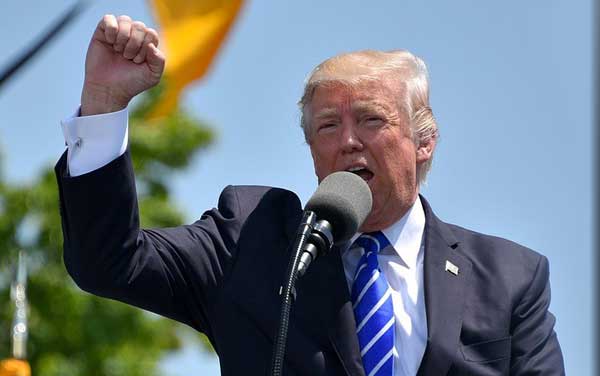South Korea and the United States finalize tariff deal

[Trump, President, USA image. Photo Credit to Pixabay]
On July 31st, South Korea and the United States concluded a trade agreement, setting the new US tariff rate at 15%, down from the previously announced 25%. This agreement brought an end to months of trade uncertainty.
Despite the negotiation deadline set as August 1st, South Korea was the only country among America’s major trading partners to finalize a deal just before the cutoff. This was driven by the new government formation and Washington’s abrupt cancellation of scheduled conferences.
Given that the United States has decided to impose a tariff rate of 15% on both Japan and the E.U., Seoul was under significant pressure to ensure that Korea is not far behind the U.S. treatment of its allies.
As Korea is home to the top two shipbuilding companies — HD Hyundai Heavy Industries Co. and Samsung Heavy Industries Co. — Washington confirmed Korea’s willingness to support the revitalization of the U.S. shipbuilding industry.
Koo Yoon-cheol, Korea’s minister of Economy and Finance, stated during a press conference held at the South Korean embassy in Washington that "President Trump expressed high regard for South Korea’s shipbuilding capabilities and asked us to begin vessel construction in the US as soon as possible.
To underscore South Korea's commitment to investing in the US, heads of the country's leading conglomerates, including Samsung Electronics Co., Hyundai Motor Group, and Hanwha Group, flew to Washington and joined government negotiators in the talks.
Under the terms of the trade agreement, South Korea will invest a total of $350 billion in the US, including a $150 billion shipbuilding fund.
The remaining $200 billion will be allocated toward the semiconductor, nuclear energy, secondary battery, and biotech sectors.
Based on these efforts, Washington has agreed to reduce tariffs on South Korea-made automobiles to 15% from 25%, bringing them in line with the tariff rates imposed on Japan and the E.U.
Additionally, the trade deal package excludes any further opening of South Korea’s rice and livestock markets. This exemption helped ease potential domestic backlash, particularly from farmers and civic groups concerned about US imports.
The negotiation results also pave the way for a Korea-U.S. Summit at the White House within the next two weeks.
Nevertheless, South Korean negotiators acknowledged that the compressed timeframe posed challenges during the trade talks, preventing them from achieving their original objectives in certain sectors.
Initially, both Japan and the E.U. faced an introductory tariff rate of 2.5% while Korea was exempted due to the Free Trade Agreement (FTA).
Therefore, the effective automobile tariff imposed on Korea was revealed to be 2.5% higher than that of Japan and the E.U., prompting a decline in shares of firms such as Hyundai Motors.
Furthermore, Washington maintained its 50% tariff on steel imports imposed in April, leaving one of Korea’s key export sectors vulnerable.
South Korean Industry Minister Kim Jung-kwan commented, “Washington remained steadfast in maintaining the steel import tariff rate. Still, the government approached the negotiations with the principle of securing a mutually beneficial outcome while ensuring any concessions remain within its tolerable range.”
Kim further emphasized that, “Regarding forthcoming (US) tariffs on semiconductors and pharmaceuticals, we will be treated on equal footing with other countries.”
Market reactions were divided, with some welcoming the results despite the short time given, and others voicing concerns over the excessive amount of investment.
Chief Korea economist at Morgan Stanley, Kathleen Oh, commented that “A case of the worst was avoided, with a pinch of relief removing Korea‑specific tariff risks. This deal puts Korea on level ground with export competitors, especially in autos, raising the expectation for the Bank of Korea to revise its growth forecast upward.”
Conversely, former South Korean trade minister Cheong In‑kyo cautioned that “When talking about investments, what was promised is going to be very important. Depending on how and where the $350 billion is spent, the deal may or may not be beneficial.”
As the global trade order continues to undergo restructuring, attention now turns to how South Korea will navigate these challenges to defend its economic interests.

- MinSeop (Mason) Kim / Grade 9
- St. Johnsbury Academy Jeju

![THE HERALD STUDENT REPORTERS [US]](/assets/images/logo_student_us.png)
![THE HERALD STUDENT REPORTERS [Canada]](/assets/images/logo_student_ca.png)
